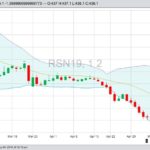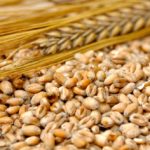MarketsFarm — There wasn’t much available to sustain a bounce in canola prices, from where David Derwin sits. “It’s really tough to say. We had canola drop so much over the last couple of months and sometimes it’s ‘buy the rumour, sell the fact,’” said Derwin, a commodities portfolio manager with PI Financial in Winnipeg. […] Read more

ICE weekly outlook: Little for canola bids to stand on

U.S. grains: Weak export data drags soybeans to new lows
Chicago | Reuters — U.S. soybean futures posted contract lows for a fourth straight session on Thursday after weak U.S. Department of Agriculture (USDA) export sales data and amid ongoing concerns that rain-delayed corn sowing would increase soy plantings. Corn was mixed as spillover pressure from lower soybeans offset support stemming from concerns about delayed […] Read more

ICE weekly outlook: Bearish funds keep canola pointed lower
MarketsFarm — ICE Futures canola prices fell to their lowest levels since 2014 during the week ended Wednesday, as bearish technical signals and a lack of progress on trade relations with China weighed on values. While a short-covering correction is possible, the underlying fundamentals also remain bearish. Speculators adding to their large net short positions […] Read more

Feed weekly outlook: Western Canadian market stabilizing
MarketsFarm — Western Canadian feed grain prices have come under pressure over the last month, but appear to be stabilizing as attention turns to spring seeding across the Prairies. “We’ve been steadily dropping for the past few weeks, and it’s leveled out now,” said Tracey Green, grain broker with Market Master Ltd. in Edmonton. Buyers […] Read more

You can count on thousand seed weight
Seeding by weight or volume is too imprecise to give you the optimum number of plants per square foot
Reading Time: 3 minutes The message is clear: If you’re still using bushels or pounds per acre as your seeding measure, you may not only be losing yield but spending more on seed than necessary. More and more producers are adopting thousand seed weight (TSW) as their primary seeding measurement. TSW is a more precise gauge of seed size […] Read more

Feed weekly outlook: Barley bids soften as attention turns to new crop
MarketsFarm — Feed barley bids in the key cattle feeding area of southern Alberta are coming under some pressure, as attention begins to turn to the new crop. “Demand is dropping off here a little bit,” said Allen Pirness of Market Place Commodities in Lethbridge. Feedlots have extended coverage through the spring and into the […] Read more

It’s not glamorous, but feed barley is a bright spot
Demand has shot up over the past year but there’s a caveat — China has been the big buyer
Reading Time: 4 minutes Barley growers will have a tough choice this spring: Target an oversaturated malt market or go for the red-hot one — feed barley. “It’s got to be a question a lot of farmers are asking themselves, especially if you’re in a region where feed and malt prices have been about the same,” said Geoff Backman, […] Read more

Pulse weekly outlook: Yellow, green pea prices vary ahead of seeding
MarketsFarm — India’s tariffs on Canadian pulses hit green and yellow peas particularly hard over the past year — and the market is still hurting as producers plan acres for 2019. Since yellow pea exports dropped significantly in the middle of the year, “there’s going to be a lot of carryover in yellow peas for […] Read more

Converting hay land to crops in spring is challenging
Fertility, soil moisture, herbicide applications, and a substantial seeding delay must all be considered
Reading Time: 2 minutes Producers should consider a number of factors before deciding to terminate hay land to seed an annual crop. “Traditionally, forage stands have been terminated in the fall by using one of three approaches — tillage only, herbicide application combined with tillage, and herbicide application followed by direct seeding into sod,” said provincial crop specialist Mark […] Read more

Heavy North Dakota snows threaten wheat seeding
Chicago | Reuters — A blanket of heavy, wet snow covering most of North Dakota, the top U.S. wheat state, threatens to delay planting of spring wheat in another blow to a U.S. farm belt already facing billions of dollars in damage from flooding. Farmers from Missouri to South Dakota have seen their corn and […] Read more

